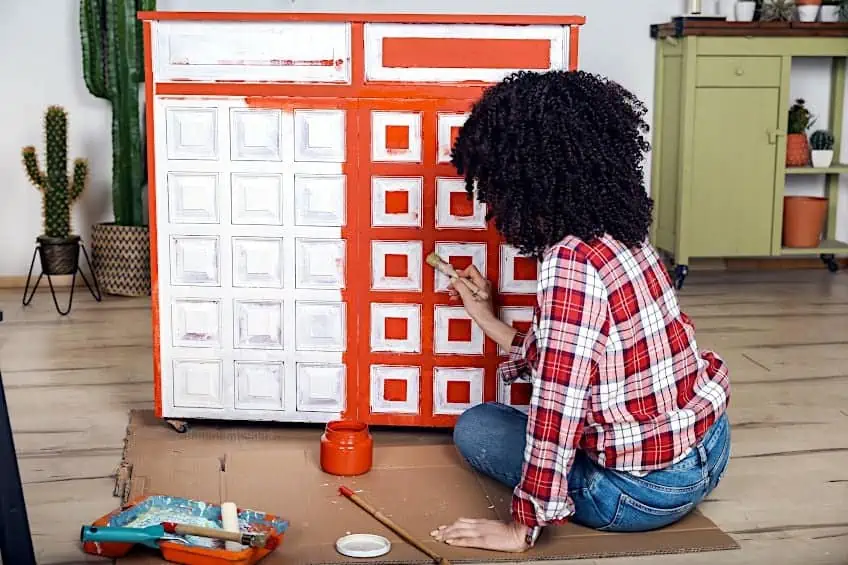What Is Enamel Paint? – Guide on How to Paint with Enamel Paints
This post may contain affiliate links. We may earn a small commission from purchases made through them, at no additional cost to you.
You may be planning to refurbish and repaint your house, and we all agree that a new coat of paint can completely transform your home. However, the problem comes when deciding on the type as well as the color of the paint. Should you use enamel paint or try acrylic paint? These two types of paint are the most commonly used when applying paint to the interior and exterior of homes. We hope to help you with making the best choice.
Table of Contents
What Is Enamel Paint?
The history of painting itself goes back many centuries, for even in the Stone Age, paint was part of cave paintings. Then, in the 19thcentury, the paint began to play a more active role in society and paint factories began to pop up all over the world. Then in the 20th-century, cars began to be something that most households could afford and possess, it was then that paint began to take on a more protective aspect, protecting the metal of the car from wear and tear, which is where enamel paint began to be used daily. This trend began to escalate, and soon enamel paint was being used on many household appliances like refrigerators, washing machines, ovens, and dishwashers. However, this form of enamel paint became a baked enamel coating or powder coating, which is still the case today. This brings us to this same question again, what is enamel paint?
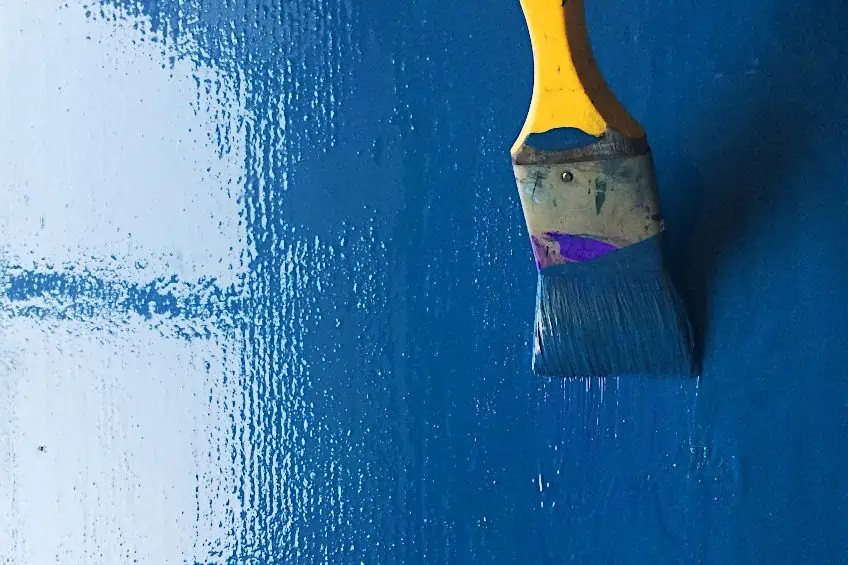
There is no uniform definition for enamel paint, but it is a paint that is designed to give your surface a glossy, hard, durable, and opaque finish. The paint also stands up exceptionally well to wear and tear. Most enamel paints are oil-based, giving you a solid finish that is heat-resistant and also washable, making it a perfect choice for protecting the surface you apply it to. However, today manufacturers have also created a water-based enamel paint. Enamel paints are mostly made up of alkyd resins, similar to the varnish you can buy, which is what makes the paint so durable and hard when dry.
This means that if you have a surface you want to protect that is exposed to heat, grease, high humidity, or dirt, then enamel paint is the right paint to use.
By coating the surface with enamel paint, you will be able to protect the surface and also minimize the maintenance required to keep it in excellent condition. Enamel paints have a wide range of gloss levels such as gloss, semi-gloss, satin, high-gloss, and flat finish are a few examples. The paint also comes in many vivid colors. It is a general rule that the glossier the paint finish, the better and more durable the protection is. Enamel paints are also very resistant to corrosion, color fading, water damage, chipping, and rust, allowing you to wash the surface often without weakening the strength of the painted surface. However, enamel paints, like all other substances, have their strengths and weaknesses. To get the best results with your painting, it is essential to recognize these factors.
- Adheres to a wide range of different surfaces
- Forms a hard and solid finish once properly cured
- Leaves you with a smooth and uniform finish
- Will not yellow over time
- The paint is very durable
- Enamel paints can stand up well against any form of wear and tear
- It is heat-resistant
- The surface is also washable once the paint has fully cured
- Supplied in various levels of gloss so you have a range of choices to suit your needs
- When painting, and a while after you have painted, you can smell the paint
- Enamel paints might not be the easiest to work
- If you are on a budget, enamel paints can be fairly expensive
- You cannot simply use water to clean enamel paints
- This type of paint is not the most suitable choice for exterior walls
Enamel Paint vs. Acrylic Paint
There are various reasons why you would use enamel paint instead of acrylic paint, but the main difference is that enamel paint is mainly oil-based. However, you also get water-based enamel paint. Acrylic paint is, however, water-based only. Let us now consider these differences in more detail.
- Enamel paints tend to turn yellow over time, but acrylic paint will never turn yellow.
- Acrylic paint leaves you with a matte finish and enamel paint dries to a glossy finish.
- Enamel paints can take up to 24 hours to dry, while acrylic paints dry within two to three hours.
- Enamel paint is not suitable for your exterior walls as it dries to a hard and non-flexible finish, which may cause cracking, while acrylic paint is the ideal choice for exterior walls.
- Enamel paint does not fade over time, but acrylic paint will fade over time.

- Enamel paints are fairly restricted when it comes to color variations, but with acrylic paints, you can find almost any shade or hue on the color spectrum.
- Acrylic paint, unlike enamel paint, does not dry to a smooth finish and brush marks are evident after the paint dries.
- Enamel paints are more durable than acrylic paints, so they are used in high-traffic areas like drawers, handles, and door frames.
- Acrylic paints are more environmentally friendly as you can clean the brushes with water, whereas enamel paints require thinners or solvents for cleaning.
- The main disadvantage of oil-based enamel paints is the high presence of Volatile Organic Compounds (VOCs), making it dangerous to use if you do not follow the safety precautions.
Is Enamel Paint Water-Based?
A professional painter knows what type of paint to use on what surface, but for the average person or DIY enthusiast, it might not be clear. Should it be water or oil-based enamel paint on the walls of our homes? So, let us now consider this question in greater detail, to see if we can make things a little easier and clearer.
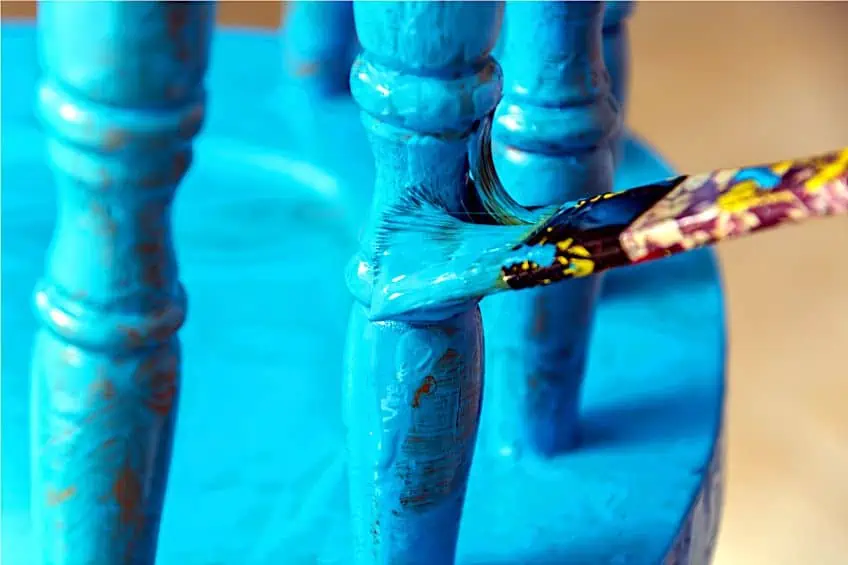
Type of Solvent
They differ in the solvent that is used in the paint. These solvents are in liquid form, and they vaporize the minute the paint dries. The solvent used in oil-based paint is mineral turpentine, and the solvent used in water-based enamel paint is water. Oil-based enamel paint is very well known for the strong pungent smell it emits, which can have adverse effects on our health. These paints are also highly flammable.
If inhaled for long periods, it can result in headaches, nausea, and skin irritation.
Therefore, when painters use oil-based epoxy paint, they ensure that there is proper ventilation to reduce the toxic smell and may even use masks. Now consider the water-based enamel paint, here you have a paint that has water as its solvent, making it perfectly safe to use. There is very little to no odor or fumes and is perfectly safe to use.
Durability
Oil-based enamel paint dries to a solid and hard surface, but it lacks elasticity and may crack when the surface it covers tends to expand or contract. The water-based enamel paint, on the other hand, also dries to a solid hard surface, but it has a great deal more elasticity and can bend due to its flexibility.
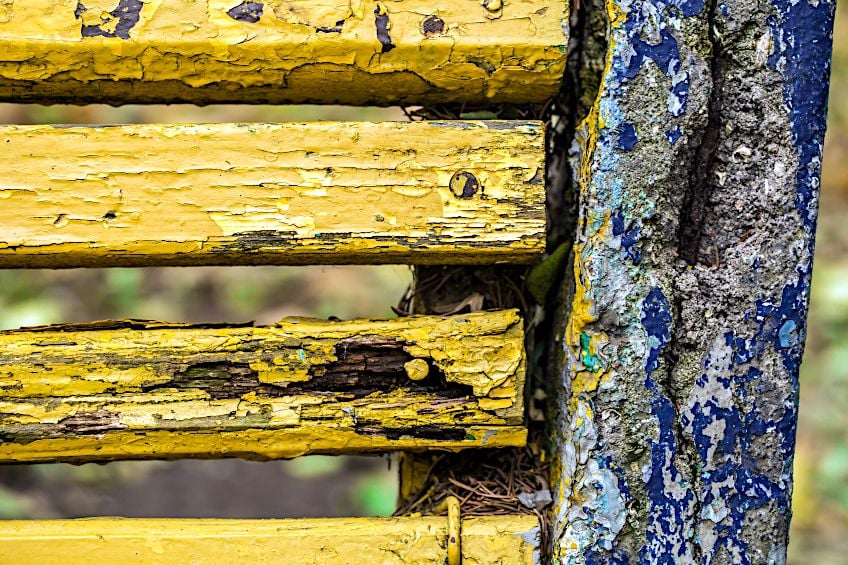
Sheen
Oil-based enamel paints have a glossy sheen that can vary in degrees from very high gloss to a flat finish. However, after some time and daily wear and tear, the gloss may be reduced, until it looks slightly dull. Whereas water-based enamel paint has a very low sheen or gloss, it can maintain this level of gloss for a longer time than oil-based enamel paint. So, if you are planning to refurbish or repaint your home in a couple of years, then we suggested that you use oil-based enamel paint.
If your budget is very tight and you need to use cheaper paint, then try using water-based enamel paint instead.
Application Process
Oil-based enamel paint is very thick, so it takes time to apply. The paint also emits a strong pungent smell, which can be detrimental to your health. The paint requires thinners to thin it before use and also needs thinners to clean the brushes afterward. The water-based enamel paint is a lot thinner and much easier to apply, making the application a lot faster. There is a lot less smell and it is not as harsh, and the cleaning process is a lot quicker and easier as it only requires water to do the job.
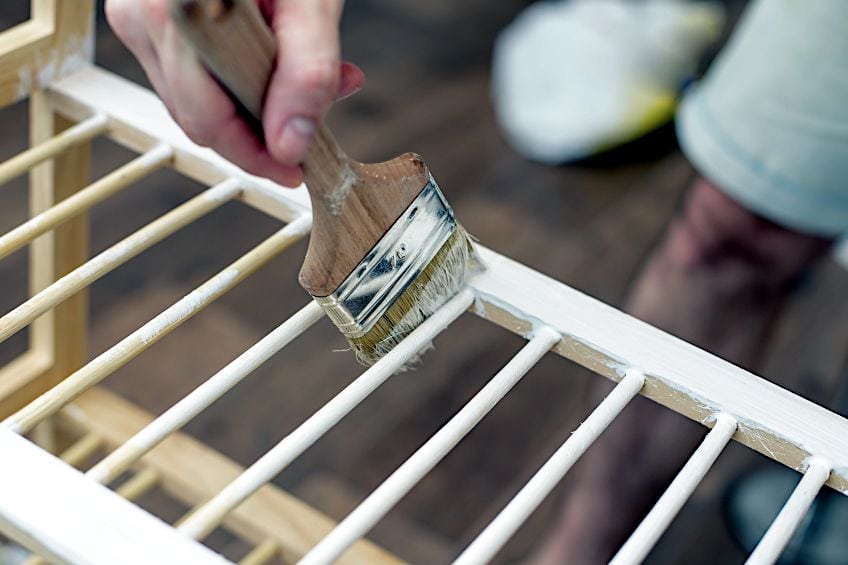
Surface Conditions
Oil-based enamel paint is unable to create a solid, strong bond where there is some moisture. So, it is vital when applying the oil-based enamel paint, you ensure the surface is completely dry before you start to paint.
For water-based enamel paint, you can apply it even if the surface is slightly wet as the paint can completely dry out the surface and absorb the moisture.
Where to Use These Types of Paints
Oil-based enamel paint contains highly flammable solvents, so it is not recommended you use it on the exterior walls of your home, as strong UV rays or light can cause it to crack or break. It has also been proved that the oil-based paint can begin to yellow after a few years. Water-based enamel paint is non-flammable, can absorb moisture and humidity, and is also resistant to UV rays or light. So, it is ideal for use on the exterior walls of your home and has been proven not to yellow over extended periods.

Water-Based vs. Oil-Bases Enamel Paint Comparison Table
Let us have a closer look at these differences by examining them in an easy-to-read chart. You will need to take into consideration all these differences to decide which one is best for your particular painting project.
| Water-Based Enamel Paint | Oil-Based Enamel Paint |
| Available in most colors | Fewer color options |
| Gloss and semi-gloss finishes | Wide range of gloss finishes |
| Does not leave a good gloss finish | Provides a superb gloss finish |
| Not suitable for doors as well as window frames | Can be used on doors as well as window frames |
| Dries in 30 minutes | Dries within eight hours |
| Able to apply a second coat after two hours | Able to apply a second coat after 16 hours |
| Is very flexible | Less flexible and becomes extremely hard |
| Resistant to all alkalis in wood and zinc-rich metals | Suitable for zinc-rich metals and alkalis in wood |
| Suitable for interior as well as exterior walls | Suitable for interior walls |
| UV-resistant and will not fade or chalk over time | Very low UV resistance and may fade over time |
Recommended Enamel Paints
When out shopping for paints, it can seem overwhelming as you have so many choices available. In most hardware stores, those that work there are knowledgeable about paints. So, if you do get stuck, simply ask for help.
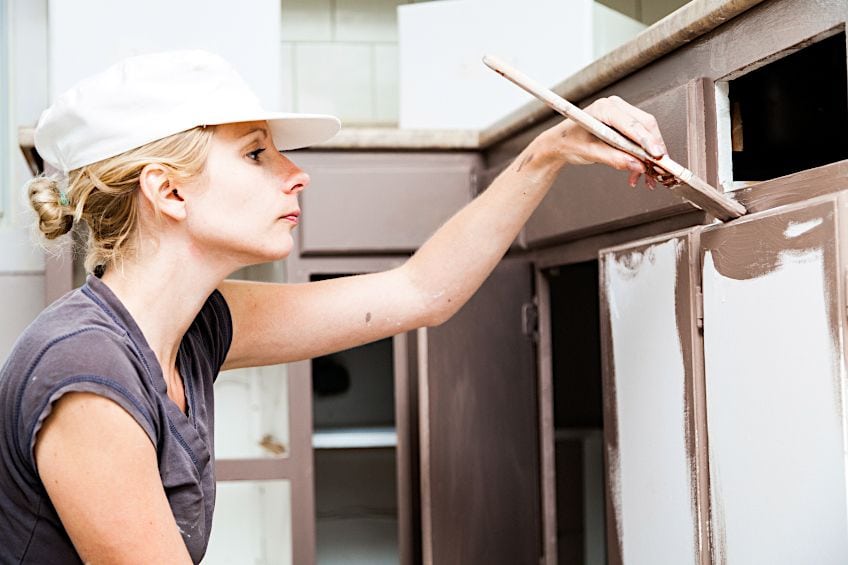
What Surface Is Best for Applying Enamel Paint?
What is enamel paint used for? At home, there are lots of surfaces you can apply enamel paint to. You can also use various forms of application from using a brush, roll-on paintbrush, or spray. This should provide you with a glossy, durable, and solid surface. Here are a few examples of some more popular surfaces in and around your home.
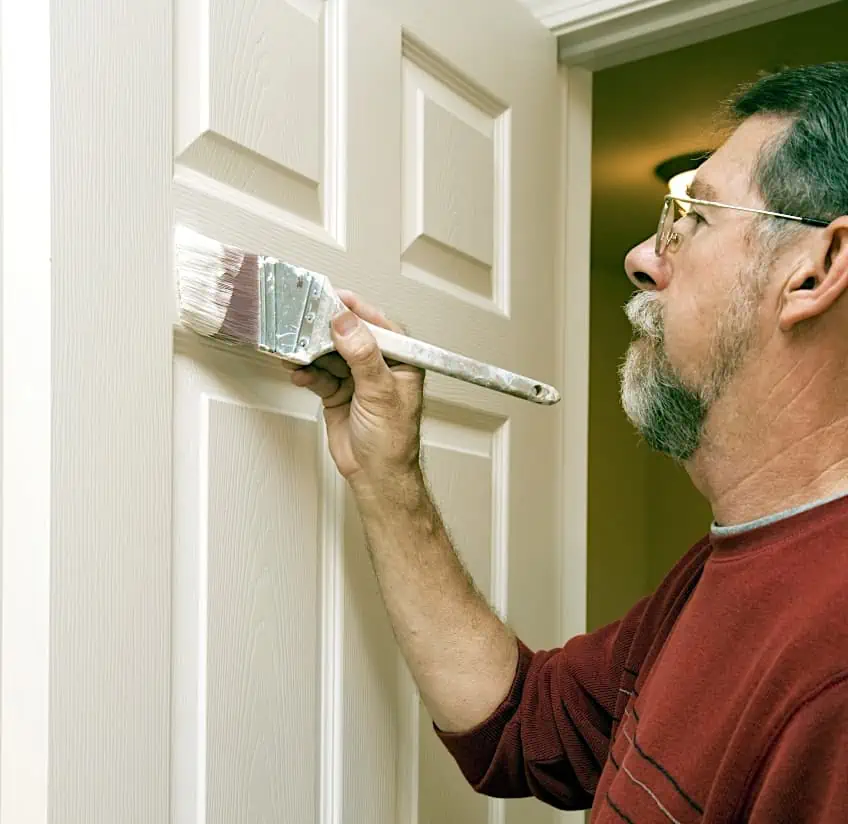
The Barbecue Grill
You need to first clean the surface of the grill thoroughly, removing all the debris and grime, and then you can coat the grill with some heat-resistant enamel paint.
Make sure you give it two coats; this process works better if you use a spray can.
Door Casings and Window Frames
These surfaces in your home suffer a great deal of daily wear and tear, so it is recommended that you use a very durable enamel paint that is easy to keep clean. First, tape the area around the casing or glass and also use a plastic sheet to cover the floor area. Then, apply at least two coats of paint, using a brush.
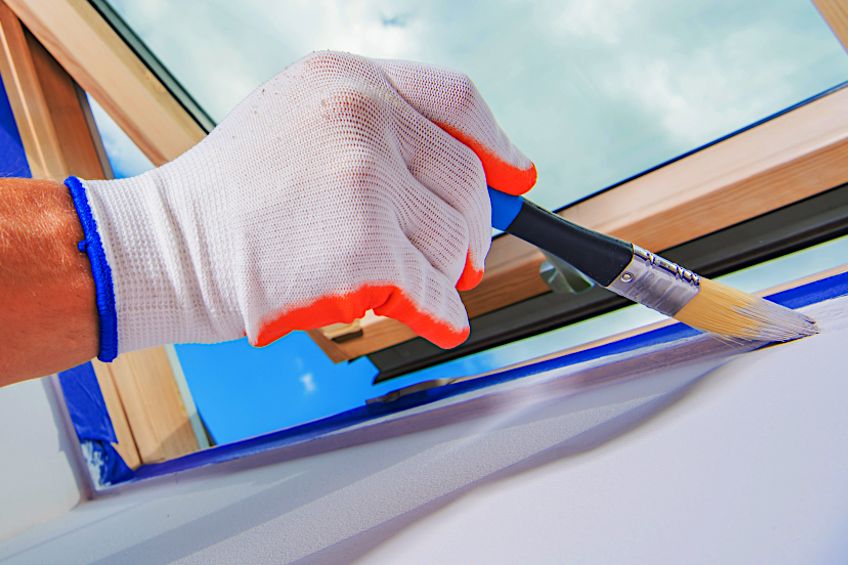
Kitchens
You often find that the kitchen appliances get scratches and chips due to everyday use, like your refrigerator, stove, and microwave oven. You can touch up these defects with a small bottle of appliance enamel paint. Since enamel paint is durable and easy to keep clean, it is ideal for use in the kitchen in areas where dirt or stains are common, or in areas that are in frequent daily use.
The glossy look gives your kitchen a clean and sparkling appearance.
Outdoor Furniture
Since the outdoor furniture remains outside and subject to all weather conditions, it is prone to fade and needs a touch of paint to bring it back to life. Use a low-pressure washer and some cleansing agent to clean. Then apply two coats of the paint, using a spray can.
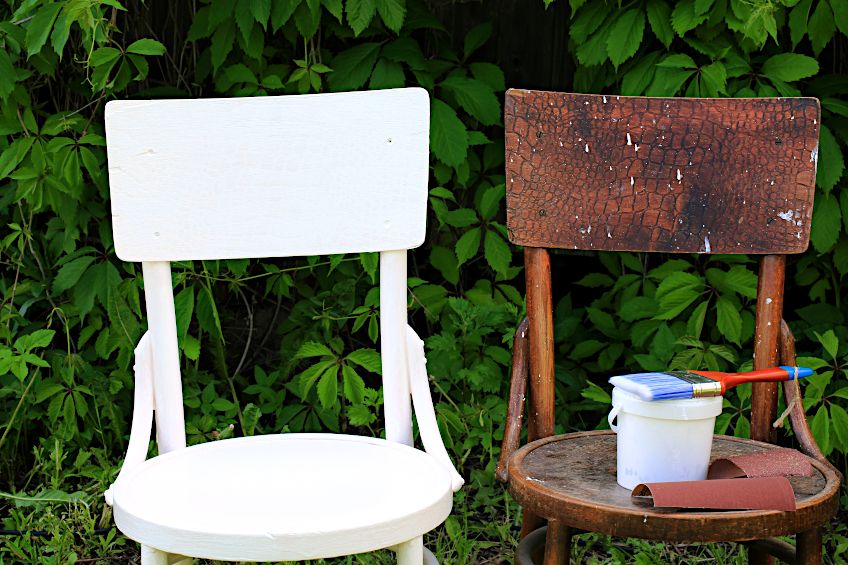
Bathrooms
When it comes to bathrooms, they generally feature shiny clean objects like tiles, taps, and other utilities. So, you need paint that is also clean and shiny and will match those objects perfectly.
You can use it on the door and window frames as well as the bathroom cabinets, and other items that are found in your bathroom.
Floors
Enamel paint is also an ideal covering for your floors as this is the area that sees more traffic than any other space in your home. The enamel paint will not only assist in making your floors look great and shiny, but it will also help in keeping them clean.
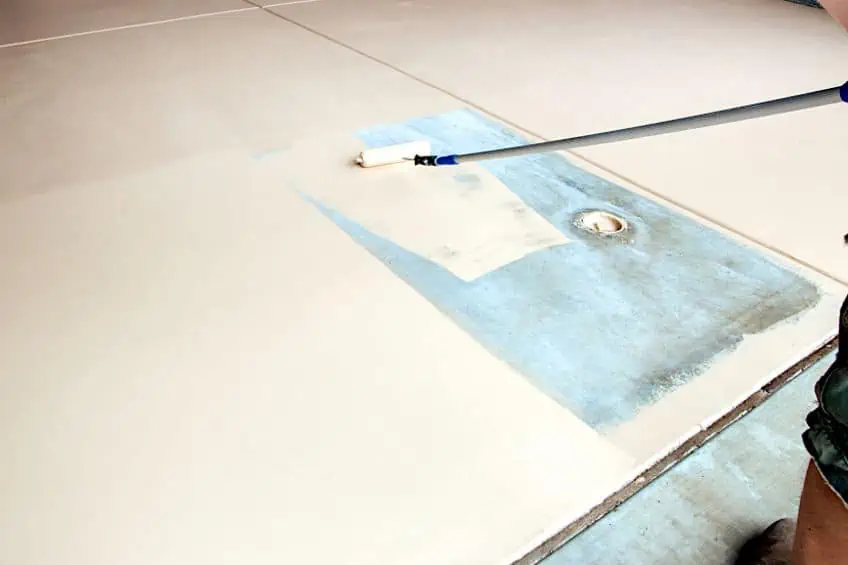
Any Metal Items
Any item in your home that is made from metal is prone to corrosion and rusting, especially if it is exposed to moisture. So, coating them with some enamel paint will not only help to keep it looking great, but it will also help in prolonging the life of the item. This applies to items such as metal signs, posts, outdoor furniture, cars, boats, and even airplanes. Here is a shortlist of other surfaces that you can apply enamel paint to.
- Crown moldings
- Cabinet fixtures
- Handrails
- Decks
How to Paint With Enamel Paint
In this article, we have already considered what enamel paint is some of the differences between the enamel paint as well as the acrylic paint, and what surfaces you can apply it to. Let us now move on to the painting process.
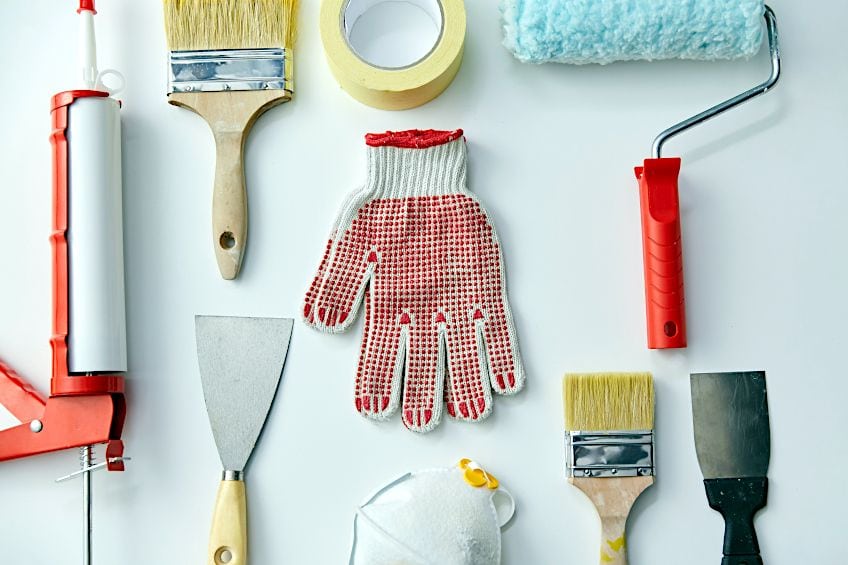
Surface Preparation
This is an essential aspect to consider when painting with enamel paint. Make sure your surface is properly clean before applying the paint. If you leave any debris or dirt on the surface, it will be trapped under the paint and the final result will be ruined. You can use some warm soapy water to wash the surface but make sure everything is dry before you paint.
It is also recommended that you keep your working area clean as this can also result in dirt and dust being found on the surface.
Prime the Surface, Mix the Paint and Apply
Once the surface is completely clean and dry you can apply the primer. The primer is vital to a good job being done as it will prevent the enamel paint from chipping as the finish gets very hard. It is also advisable that you use a primer that is right for its application, like a primer that is designed for use outdoors. You must mix your paint thoroughly before you use it, by using a paint stirrer or stick, use a stick to get to the sides and bottom, allowing the oil and paint pigments to mix properly. Painting your item is the fun part because the paint dries to a solid finish and has a shiny gloss, it is important that you do not use cheap brushes as this will leave brush marks, and the final appearance of your paint job will be ruined.
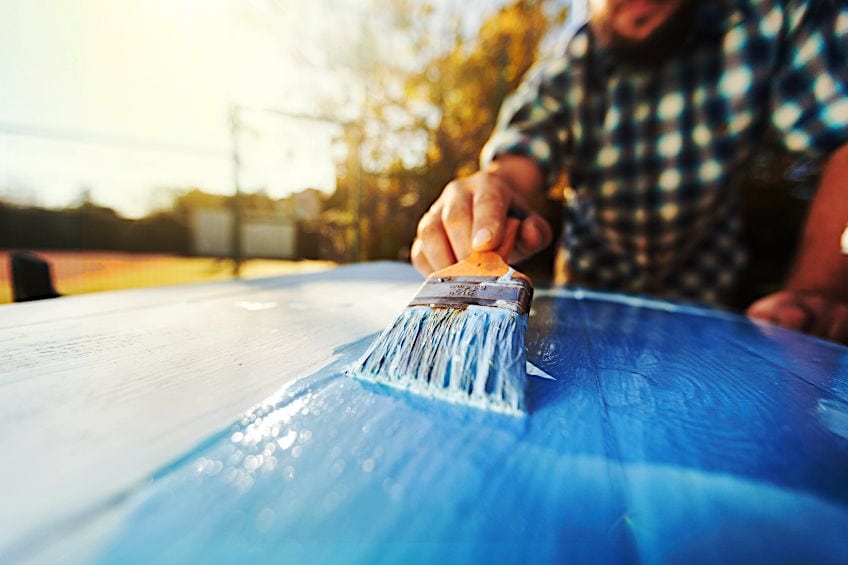
Safety Precautions
Since most enamel paints are oil-based, they emit some very toxic fumes, a lot more than water-based enamel paints. However, regardless of what type of enamel paint you are using, it is recommended that you follow certain basic safety guidelines that will protect you from these very dangerous fumes.
- When using enamel paints always wear a safety mask, neoprene gloves, safety goggles, and a leather apron.
- When making use of a spray gun use a spray booth fitted with an exhaust system.

- After completing your paint job, clean your hands and apply some baby oil or moisturizer.
- Enamel paints are extremely flammable. Do not smoke or use the paint near any heat source.
- When finished with the painting job ensure the paint tin lid is securely closed and store the paint in a cool area.
Choosing the correct paint depends on what you want to paint. The main advantage of using enamel paint is its ability to adhere to a large range of surfaces including wood, metal, plastic, and much more, leaving you with a durable hard, and glossy finish.
Take a look at our enamel paint webstory here!
Frequently Asked Questions
What Is Enamel Paint Used For?
Many people use enamel paint incorrectly and end up with very poor results. Enamel paints are either water or oil-based and give you a durable hard opaque finish, and they are mainly used on metal surfaces or the interior of your home. You need to consider if the surface of the material is going to be compatible with the enamel paint before you start to apply it.
What Is Acrylic Enamel Paint?
Is enamel paint water-based? The main factor when dealing with these paints is the solvent found in the makeup of the paint. Enamel paints are oil-based and acrylic enamel paints are all water-based. The oil-based enamel paints take longer to dry and are more expensive than acrylic enamel paints. The water-based option emits less toxic fumes and dries a lot faster, and you can use enamel paint on your exterior walls as well.
What Is Enamel Spray Paint?
Enamel spray paint is a paint that dries fast to a durable, glossy finish, usually used on outdoor metal objects or indoor furnishings. It is the same as the oil-based enamel paint but supplied in a spray can for easy use and application.
When Is Enamel Paint Not a Good Idea?
Although enamel paint is very versatile and can be used on many surfaces and for many reasons, there are at times some places where you should not use enamel paint, and below are a few such examples. For example, when you are painting interior drywall and siding. Also, it is not a good idea if you are sensitive to toxic fumes from the paint.
Can You Paint Over Enamel Paint?
Remember, whenever you are going to paint over a surface that has already been painted, you must prepare the surface well beforehand. This can be done by sanding the surface down first or by making use of a primer coat. It is always best to avoid painting over a painted surface and to fully remove the paint and start over.
In 2005, Charlene completed her wellness degrees in therapeutic aromatherapy and reflexology at the International School of Reflexology and Meridian Therapy. She worked for a company offering corporate wellness programs for several years before opening her own therapy practice. In 2015, she was asked by a digital marketer friend to join her company as a content creator, and it was here that she discovered her enthusiasm for writing. Since entering the world of content creation, she has gained a lot of experience over the years writing about various topics such as beauty, health, wellness, travel, crafting, and much more. Due to various circumstances, she had to give up her therapy practice and now works as a freelance writer. Since she is a very creative person and as a balance to writing likes to be active in various areas of art and crafts, the activity at acrylgiessen.com is perfect for her to contribute their knowledge and experience in various creative topics.
Learn more about Charlene Lewis and about us.
